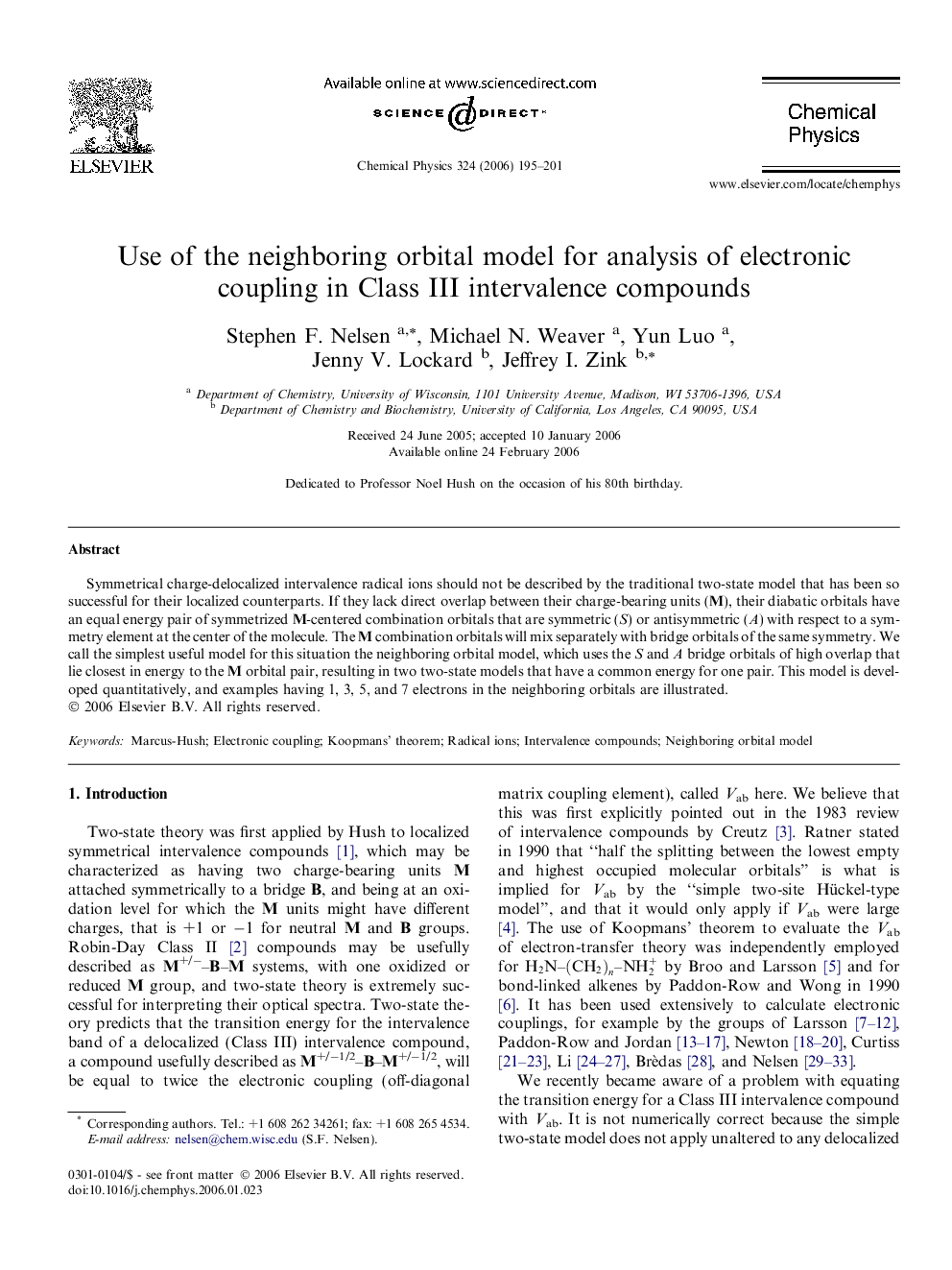| کد مقاله | کد نشریه | سال انتشار | مقاله انگلیسی | نسخه تمام متن |
|---|---|---|---|---|
| 5377090 | 1389379 | 2006 | 7 صفحه PDF | دانلود رایگان |
عنوان انگلیسی مقاله ISI
Use of the neighboring orbital model for analysis of electronic coupling in Class III intervalence compounds
دانلود مقاله + سفارش ترجمه
دانلود مقاله ISI انگلیسی
رایگان برای ایرانیان
موضوعات مرتبط
مهندسی و علوم پایه
شیمی
شیمی تئوریک و عملی
پیش نمایش صفحه اول مقاله

چکیده انگلیسی
Symmetrical charge-delocalized intervalence radical ions should not be described by the traditional two-state model that has been so successful for their localized counterparts. If they lack direct overlap between their charge-bearing units (M), their diabatic orbitals have an equal energy pair of symmetrized M-centered combination orbitals that are symmetric (S) or antisymmetric (A) with respect to a symmetry element at the center of the molecule. The M combination orbitals will mix separately with bridge orbitals of the same symmetry. We call the simplest useful model for this situation the neighboring orbital model, which uses the S and A bridge orbitals of high overlap that lie closest in energy to the M orbital pair, resulting in two two-state models that have a common energy for one pair. This model is developed quantitatively, and examples having 1, 3, 5, and 7 electrons in the neighboring orbitals are illustrated.
ناشر
Database: Elsevier - ScienceDirect (ساینس دایرکت)
Journal: Chemical Physics - Volume 324, Issue 1, 9 May 2006, Pages 195-201
Journal: Chemical Physics - Volume 324, Issue 1, 9 May 2006, Pages 195-201
نویسندگان
Stephen F. Nelsen, Michael N. Weaver, Yun Luo, Jenny V. Lockard, Jeffrey I. Zink,